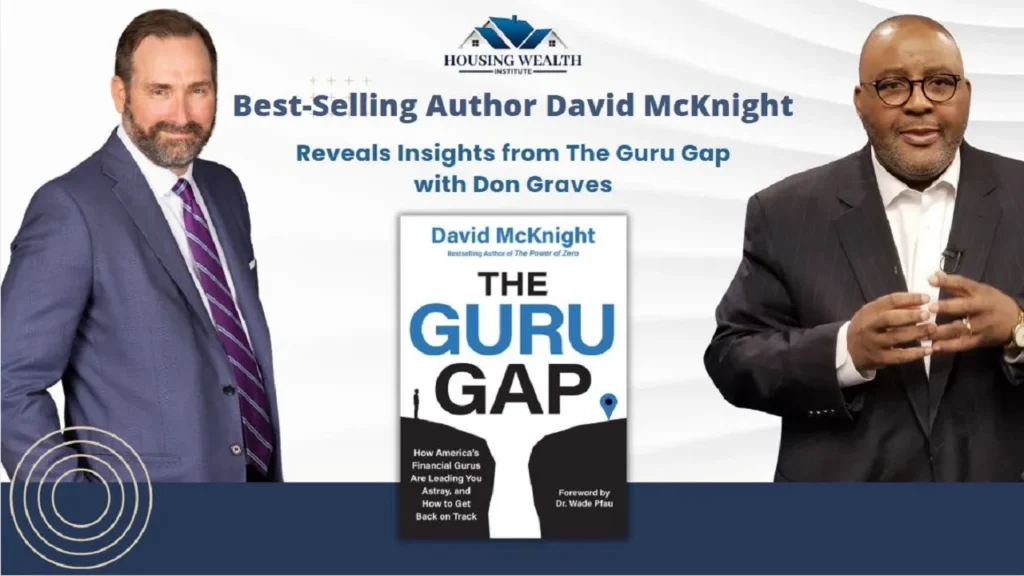A Personal Reflection on a New Kind of Retirement

If you told me back in the year 2000, when I was 35, that I’d spend the rest of my life working for and with older adults, I probably would have smiled politely and dismissed it. I was building a career, raising a family, and focused on the everyday demands of midlife. The idea of becoming deeply involved in the world of aging and retirement wasn’t even on my radar.
Now, at 60, I’m standing at the edge of what people call retirement. For many, it’s the dream they’ve worked toward for decades. For others, the word doesn’t quite fit. Some can’t imagine stepping away from work, and I’m probably in that group. A lot depends on the kind of work you do, the purpose it gives you, and how you’re wired.
But no matter where someone falls, there’s one thing nearly everyone overlooks: the idea of retirement as we know it is remarkably new. In fact, what surprised me most as I dug deeper is how young many of our “normal” financial tools are. The reverse mortgage only dates back to 1961, and there are fourteen other major financial inventions—from the 30-year mortgage to mutual funds, IRAs, 401(k)s, credit cards, index funds, ETFs, and more—that were created within just the last century. We treat them as givens, but they were built for a life stage that didn’t even exist for most of human history.
Recognizing this changes how we see retirement—and how we prepare for it. Before we look at the tools themselves, it’s worth understanding where this idea of retirement actually came from.
The Modern Idea of Retirement: Where It Actually Came From
Retirement is a modern invention. For most of human history, it simply didn’t exist. Global life expectancy hovered between 40 and 50, work was physical, and savings tools were limited. When people could no longer work, they relied on family or the community around them. No one expected to live twenty or thirty years without earning an income.
Things began to shift in 1889 when Germany’s Chancellor Otto von Bismarck introduced the world’s first national old-age pension. The retirement age was set at 70 even though the average person didn’t live that long. It wasn’t designed to fund a long period of leisure. It was a small step toward social stability during a time when very few people lived into old age.
The real turning point came with the Industrial Revolution. Factory work replaced farm work, families moved to cities, and multigenerational households became less common. Older workers found it harder to keep up with industrial labor, and societies began to recognize the need for more formalized old-age support.
In the United States, retirement became real with the Social Security Act of 1935. When the program began, life expectancy was only 61, and benefits were modest. But it established something that had never existed before: a national commitment to income in old age.
The decades after World War II created the first generation that could truly retire. Rising wages, stable corporate employment, employer pensions, better healthcare, and widespread homeownership gave millions of Americans the ability to step out of the workforce. The GI Bill accelerated middle-class growth and helped families build wealth, especially through home equity.
Everything shifted again in the 1980s. Employer pensions peaked in the late 1970s and then declined. IRAs and 401(k)s moved retirement responsibility from employers to individuals, making retirement something people had to actively plan for rather than something provided automatically.
By 2020, U.S. life expectancy had risen to nearly 79. What was once a brief phase near the end of life became a full multi-decade stage, often lasting twenty or thirty years—far longer than early policymakers ever imagined.
Fifteen Major Financial Innovations That Shaped Modern Retirement
1. 🏠 The 30-year fixed-rate mortgage (1930s)
Before the New Deal, home loans lasted 3–5 years with big balloon payments at the end. Most people simply rented for life because they couldn’t refinance or pay off a giant lump sum. The 30-year mortgage changed everything. It stabilized the housing market, made homeownership available to the middle class, and allowed families to build equity slowly over time. For many retirees today, that long-term equity is their greatest store of wealth.
2. 🧓 Social Security (1935)
Created during the Great Depression, Social Security was the first time the government promised a baseline of income in old age. It wasn’t meant to fund an entire retirement, just to make sure seniors didn’t fall into poverty. Over the decades, spousal benefits, survivor benefits, disability coverage, and cost-of-living adjustments were added. Today, it remains the financial backbone for a large percentage of older Americans.
3. 📊 Mutual funds (1920s–1940s)
The first modern mutual fund launched in 1924 and gave everyday savers something they never had before: access to a diversified, professionally managed investment pool. It meant regular people didn’t have to pick individual stocks. They could invest alongside others and grow wealth gradually. This one innovation opened the door to long-term investing for millions of households.
4. 💼 The modern pension system (mid-20th century)
From the 1940s through the 1970s, employers offered pensions that guaranteed a paycheck for life. It created the first generation that could retire with confidence. You worked a career, retired at 65, and collected income. This system shaped our cultural expectations of retirement even though it no longer exists for most workers today.
5. 💳 Credit cards (1950s)
The Diners Club card arrived in 1950, followed by Visa and Mastercard. Credit cards brought national purchasing power, standardized credit scoring, and the ability to pay expenses gradually instead of all at once. This wasn’t just about convenience; it fundamentally changed cash flow for American households.
6. 🏡 The reverse mortgage (1961)
The first reverse mortgage appeared in 1961 to help a widow stay in her home after losing her husband’s income. It was a small local idea, but it recognized something important: older homeowners often had wealth they couldn’t access. In 1988, Congress authorized the U.S. Department of Housing and Urban Development to insure reverse mortgages, creating the Home Equity Conversion Mortgage (HECM) program. With federal insurance, mandatory counseling, and non-recourse protections, reverse mortgages became a regulated financial tool rather than a niche idea. Today, home equity is the largest asset most retirees hold, making the reverse mortgage an essential part of modern retirement planning.

7. 📈 IRAs (1974)
Created under ERISA, IRAs gave workers a tax-advantaged way to save on their own, even if their employer didn’t offer a plan. It added flexibility, portability, and control and encouraged millions of Americans to begin building personal retirement accounts.
8. 🏛️ The 401(k) plan (1978–1981)
What started as a small line in the tax code turned into the primary retirement plan in America. By the mid-1980s, employers shifted away from guaranteed pensions toward employee-funded 401(k)s. This single change moved retirement risk and responsibility from companies to individuals and transformed how Americans save.
9. 🛡️ Long-term care insurance (1970s)
As people began living longer, families realized that extended care, assistance with bathing, dressing, mobility, could quickly drain savings. LTC insurance emerged to help protect retirement funds from the rising cost of aging. While the market has evolved and faced challenges, the original goal remains the same: reduce the financial and emotional strain of long-term care events.
10. 💵 Money market funds (1971)
The first money market fund offered savers a safe place to park cash with returns that beat traditional bank accounts. It gave retirees a middle ground between growth and stability, liquidity with a bit of yield, and became a standard feature in retirement portfolios.
11. 📘 The index fund (1976)
Jack Bogle’s first index fund was mocked as “Bogle’s Folly.” But he believed most investors were better off owning the whole market rather than trying to beat it. He was right. The index fund reshaped investing by lowering costs, improving results, and changing the culture of retirement savings. Today, indexing is the foundation for millions of portfolios.
12. 🔁 Exchange-traded funds (1993)
ETFs combined the diversification of mutual funds with the flexibility of stock trading. Their low fees and tax benefits made them one of the fastest-growing investment tools ever created, giving retirees more cost-efficient ways to diversify.
13. 🎯 Target-date retirement funds (1990s–2000s)
These funds simplified retirement investing by automatically shifting from growth to preservation as someone nears retirement. They became the default option in many workplace plans and helped millions of workers invest without having to constantly rebalance.
14. 💻 Online brokerage platforms (1990s)
E-Trade and similar platforms brought investing directly to the public. Real-time information and drastically lower commissions democratized participation in the markets. What used to cost hundreds of dollars per trade now costs nothing.
15. 🤖 Robo-advisors (2008 onward)
Robo-advisors like Betterment and Wealthfront began by offering algorithm-driven portfolios that handled diversification, rebalancing, and tax-loss harvesting at a fraction of the cost of traditional advisors. What started as a simple automation tool has grown into something far more significant.
With the rise of everyday AI, now as common in our lives as smartphones, robo-advice is evolving into a powerful force that may reshape investing for generations. These platforms are learning faster, adapting quicker, and delivering sophisticated guidance that was once reserved for high-net-worth clients. For many investors, especially small savers, robo-advisors represent one of the most monumental shifts in retirement planning: intelligent, accessible investment management available to anyone with a phone.
Why This Matters for Understanding the Reverse Mortgage
Modern retirement is going to last longer, cost more, and be far less predictable than anything previous generations faced. People have more financial tools available than ever, yet most have not saved enough to maintain the lifestyle they want unless they learn how to use all of the resources available to them.
Most retirees rely on three traditional buckets of money. The first is the income bucket, which usually includes Social Security and, for some, a pension. A few may add part-time work to help support their lifestyle. The second is the investment bucket, made up of IRAs, 401(k)s, brokerage accounts, savings, the sale of a small business, or a second property. The third is the insurance bucket, which often includes annuities and life insurance that can create stability or protected income.
The question every retiree eventually faces is simple: Will these buckets be enough? Each one is exposed to risk. Markets can drop at the wrong time. Taxes can rise unexpectedly. Healthcare costs can surge. Inflation quietly erodes buying power. Family needs can surface without warning. Even normal enjoyment like travel, hobbies, and helping children or grandchildren can draw down assets faster than expected. Over time, every bucket can lose volume.
What often gets overlooked is that most retirees also own a home. Roughly 87 percent of older adults are homeowners, and the total housing wealth available to seniors is estimated at more than 14 trillion dollars. That makes home equity the single largest retirement asset in the country, larger than IRAs, 401(k)s, and brokerage accounts combined. Considering home equity in retirement planning is not a luxury. It is practical and responsible.
This brings us back to the reverse mortgage.
The reverse mortgage was not designed for the world of the 1930s or 1950s. It was designed for the world retirees face today, a world of longer lifespans, higher costs, disappearing pensions, and financial uncertainty. It is one of the last major tools added to the retirement planning landscape and was created specifically to help older homeowners turn an illiquid asset into a flexible resource when they need it most.
Housing wealth has always been there. The reverse mortgage is simply the modern, federally regulated way to make that wealth available in a retirement environment that continues to change.

Related Articles and Resources
- Comparing HELOCs and RELOCs for Retirement Income Planning
- Social Security’s $195 Billion Overhaul: Reverse Mortgage Insights
- Brace for Impact: 5 Ways to Use Housing Wealth in Volatility
What to Do When You Have a Client or Case?
- Go to www.HousingWealthPro.com and request an Housing Wealth Illustration. Give Details in the “Notes” Section including the clients phone # if they would like a Housing Wealth Assessment. You can also
- Schedule a Time to Speak with Me: Click Here
- Want faster results? Visit www.HousingWealthCalculator.com and get a 60-second preview of potential reverse mortgage benefits.
The content of this blog is for financial advisors and professionals only and is not intended for consumer use. Names, cases, and scenarios are fictionalized for illustrative purposes. The opinions expressed here are those of the author alone and do not reflect the views of any affiliated entities or individuals. Don Graves, NMLS #142667.





